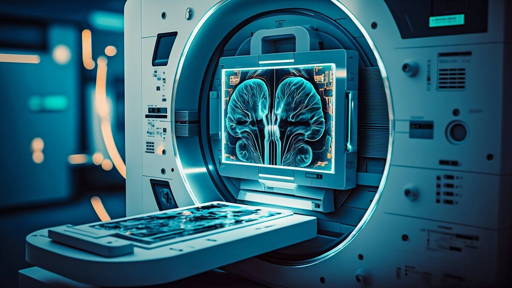Generate tips for better patient communication. Many doctors are experimenting with ChatGPT by asking questions about diagnoses and treatments. Despite impressive answers (after all, AI has already passed a medical exam), caution is advised as it may provide misleading or outdated information.
However, a chatbot can work well for non-medical tasks and help develop soft professional skills. For example, updating knowledge on communication with patients or other soft skills. But even here, the principle of limited trust should be considered. Generative AI is also suitable for creating advice-like posts on social media, blogs, and websites of healthcare professionals. There is just one caveat: it is best to treat a generated text as inspiration for writing your own article in your personalized style.
Tools: ChatGPT, Bing
Create visuals for blogs, websites, or social media platforms. AI not only helps you write a text, but it also creates stunning graphics for your new article on a clinic website, for example, with some tips regarding disease prevention. Simply describe the desired content and the style for the illustration. If the AI-generated graphics appear unnatural, refine the query by specifying the content (e.g., whether it should be a photograph, watercolor, modern art, etc.). Tip: AI struggles in generating images of people but excels in abstract imagery.
Tools: Dall-E, Stable Diffusion, Midjourney (subscription needed, complicated to use)
Review patient symptoms before appointments. AI tools for preliminary health assessments of patients gained popularity during the COVID-19 pandemic. The are many of them on the market, for example, Symptomate and Ada Health. They can be integrated into websites or mobile applications, allowing patients to answer a series of symptom-related questions before their visit. The patient is then directed to the appropriate specialist based on triage results. Symptomate also proves helpful in collecting preliminary medical data while the patient waits in the waiting room. Symptoms and initial health assessment data are sent to the physician’s computer before the patient enters their office.
Tools: Symptomate, Ada Health
Translate and write grammatically correct texts in English. You don’t have to be multilingual to communicate fluently with your patients from different countries. Numerous AI-based translators can help communicate with them. Among the most interesting are the Google Translate and DeepL mobile applications, including dictation options. Just choose the language and say what you want to tell the patient; the app translates your words, which the AI-generated lector reads. So you always have your interpreter in your pocket that help to break the language barriers no matter which language your patients speak.
Tools: Google Translate, DeepL
Summarize information from lengthy scientific papers. What scientific studies on the treatment of disease X have recently been published? What are the key conclusions from studies X, Y, and Z? Doctors and nurses lack the time to read lengthy scientific publications. AI is ideal for summarizing the findings from the scientific literature and searching for articles based on simple queries. Systems like Elicit can find relevant articles without knowing the exact keywords, summarize the results, and condense the information from the papers.
Tools: Elicit, Askpaper.ai
Convert voice memos into text. Audio-to-text converters (voice recognition systems) have evolved enormously in recent years. They can help jot down ideas, draw up a work plan, make notes during exciting conference speeches, or write e-mails without typing. Due to privacy issues, converting a conversation with a patient into notes in an electronic health record (EHR) with online tools cannot be used – such solutions are not HIPAA (USA) and GDPR (Europe) compliant. They do not operate in a local data environment but transfer the data to an external server, which threatens patient data privacy. It is essential to use certified transcription systems integrated with EHR systems (for example, Nuance Dragon Medical, etc.).
Nevertheless, free online tools can quickly change speech (non-medical data) into text. You can dictate your e-mails or create memos without your hands.
Tools: Google Docs (voice typing option), Speechnotes, Otter.ai
6 AI tools to help doctors and nurses: from ChatGPT to Google docs
20 June 2023

AI
News







